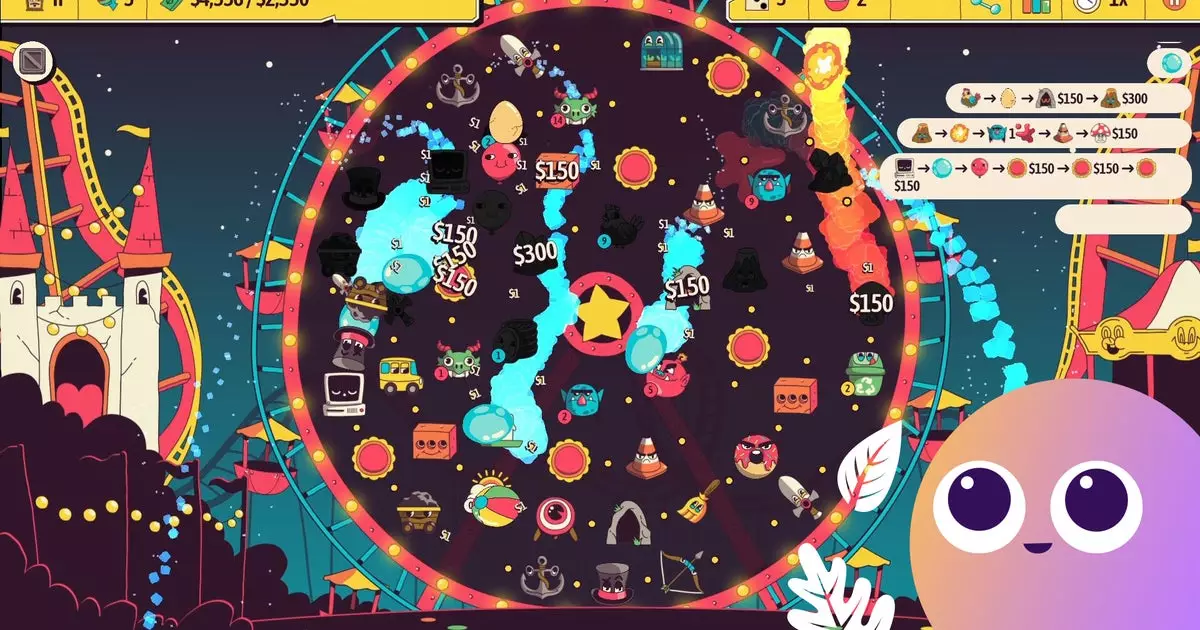The gaming landscape is continuously evolving, and during this period of rapid change, a peculiar trend is gaining traction: the rise of gambling-inspired video games. The ongoing Steam Next Fest, running from October 14th to 21st, has showcased a diverse array of demos intended to capture the attention of fans and critics alike. This event has become a breeding ground for innovation, and among the plethora of titles, certain games have caught our attention for their unique fusion of gambling mechanics with engaging gameplay elements.
Central to many of these new games is the intersection of luck and strategy. The latest title to surf on this wave is Ballionaire, a game influenced by the traditional Japanese pachinko machines. Unlike conventional gambling setups that rely solely on chance, Ballionaire injects a layer of strategy by allowing players to craft their own game setup. Users can dictate where to place various whimsical objects, turning a once passive experience into a dynamic exploration of tactical placements.
In Ballionaire, the premise is deceptively simple: players drop balls from the top of a colorful board, where they ricochet off an array of pins and interactive elements. The true magic lies in the triggers and bumpers—each designed not just to score points but to fundamentally alter the trajectory and outcomes of the game. For instance, the introduction of elements mimicking the classical four elements—from blazing fire to nurturing water—serves to enhance both the visual flair and strategic depth.
One standout feature of Ballionaire is its vibrant aesthetics, characterized by a kaleidoscope of colors and imaginative designs. This enhances the experience, transforming mere numerical outcomes into a feast for the senses. Players are encouraged to experiment with bumpers and triggers that create intricate chains of actions, encouraging a “one more turn” compulsion that is familiar in the roguelike genre. Such designs promote a tactile interaction; the thrill of predictability mixed with the chaos of randomness captivates the audience, making each drop an exhilarating experience filled with unexpected rewards.
Players can engage with mechanics that allow for creative combinations—a fried meal garnished with diversity from various food items, all before being devoured by a whimsical character at the bottom of the board. The diversity of play styles, from strategic placement to outright lunacy, embraces the unpredictable nature of games that invoke a casino atmosphere, while also crafting an environment that is approachable and fun.
Examining the Ethical Implications
While the mechanics and visual appeal are surely engaging, it is necessary to analyze the broader implications of such gambling-themed gameplay in an industry already riddled with ethical concerns. With the prevalence of free-to-play titles employing psychologically manipulative tactics to maximize player engagement and financial investment, the emergence of games designed around gambling mechanics prompts critical discussions. Developers should be conscious of how these themes might resonate with audiences, especially considering the issues surrounding gambling addiction and consumer protection.
The creator of Balatro has been proactive in addressing these concerns, ensuring through personal directives that the game remains open to community engagement rather than exploitation. Their emphasis on ethical design reflects a promising shift in how modern game developers are thinking about the social responsibilities accompanying their creations.
As we witness the rise of games like Ballionaire during Steam Next Fest, it is clear that gambling-inspired mechanics are not merely a passing fad but a testament to the spirit of innovation within the gaming industry. By combining elements of chance, strategy, and vibrant design, these games present players with an intriguing blend of enjoyment and complexity. However, developers must remain vigilant in addressing the ethical ramifications of gambling mechanics, striving to create an environment that respects the player experience while fostering responsible gaming practices. As the industry continues to evolve, only time will reveal whether this trend will lead to a paradigm shift in game design or become a cautionary tale within the gaming community.

